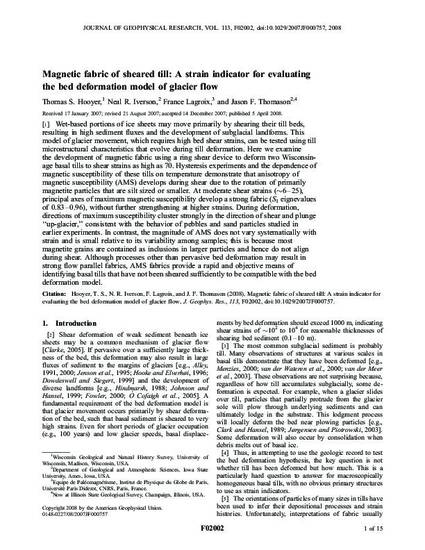
[1] Wet-based portions of ice sheets may move primarily by shearing their till beds, resulting in high sediment fluxes and the development of subglacial landforms. This model of glacier movement, which requires high bed shear strains, can be tested using till microstructural characteristics that evolve during till deformation. Here we examine the development of magnetic fabric using a ring shear device to deform two Wisconsin-age basal tills to shear strains as high as 70. Hysteresis experiments and the dependence of magnetic susceptibility of these tills on temperature demonstrate that anisotropy of magnetic susceptibility (AMS) develops during shear due to the rotation of primarily magnetite particles that are silt sized or smaller. At moderate shear strains (∼6–25), principal axes of maximum magnetic susceptibility develop a strong fabric (S1 eignevalues of 0.83–0.96), without further strengthening at higher strains. During deformation, directions of maximum susceptibility cluster strongly in the direction of shear and plunge “up-glacier,” consistent with the behavior of pebbles and sand particles studied in earlier experiments. In contrast, the magnitude of AMS does not vary systematically with strain and is small relative to its variability among samples; this is because most magnetite grains are contained as inclusions in larger particles and hence do not align during shear. Although processes other than pervasive bed deformation may result in strong flow parallel fabrics, AMS fabrics provide a rapid and objective means of identifying basal tills that have not been sheared sufficiently to be compatible with the bed deformation model.
Available at: http://works.bepress.com/neal-iverson/37/

This article is from Journal of Geophysical Research: Earth Surface 113 (2008): F02002, doi:10.1029/2007JF000757. Posted with permission.